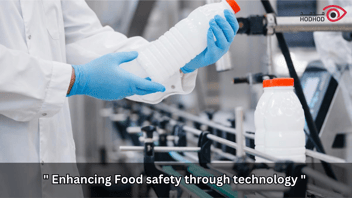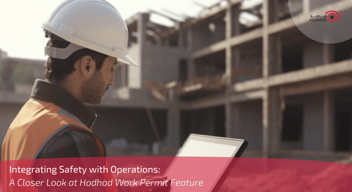Confined Space Risks: A Comprehensive Guide to Safety Measures
Confined spaces can pose a range of hazards, from poor air quality due to lack of ventilation to the presence of toxic gases, flammable materials, or even the risk of engulfment.
Introduction
Narrow spaces often evoke a sense of ease in work, but they also come accompanied by underlying risks that cannot be ignored. These confined and enclosed environments may include storage tanks, tunnels, sewers, and other areas with limited entry and exit points. While these spaces serve different purposes across industries, ensuring safety within them is of utmost importance. In this blog, we will delve into the challenges posed by confined spaces and explore effective strategies for safely navigating through them.
Understanding Confined Spaces:
A confined space is more than just a tight space; it meets certain criteria that make it potentially hazardous. These criteria usually include limited entry and exit points, the potential for hazardous atmosphere buildup, and difficulties with communication and rescue. Identifying such spaces in your environment is the first step toward ensuring safety.
Recognizing the Hazards:
Confined spaces can pose a range of hazards, from poor air quality due to lack of ventilation to the presence of toxic gases, flammable materials, or even the risk of engulfment. Recognizing these hazards requires proper training and assessment. Conduct thorough risk assessments before entry and use monitoring equipment to identify any potential threats.
Air Quality Monitoring: Ensuring Breathable Environments
Among the various safety measures, air quality monitoring stands as a critical component. Confined spaces often have restricted airflow, leading to the accumulation of hazardous gases and reduced oxygen levels. To counter this, air quality monitoring devices such as gas detectors play a vital role:
Hazard Detection:
Hazard detection involves the use of sensors and monitoring equipment to identify potentially dangerous gases, such as carbon monoxide (CO) and hydrogen sulfide (H2S). These gases are often colorless, odorless, and can pose serious health risks when present in high concentrations.
Measuring Oxygen:
Continuous monitoring of oxygen levels is essential to ensure that the environment remains breathable. Low oxygen levels can lead to asphyxiation risks, particularly in confined spaces or areas with limited ventilation.
Providing Alerts:
Monitoring systems are equipped to provide instant alerts when dangerous gas levels are detected or when oxygen levels drop to unsafe levels. These alerts are crucial in prompting workers to take immediate actions to evacuate or protect themselves.
Real-time Data:
Continuous monitoring offers real-time insights into gas concentrations and oxygen levels. This enables quick adjustments to ventilation systems, safety measures, and evacuation procedures as needed to prevent accidents or exposure.
Data Records:
The logged data from monitoring systems serves several purposes. It helps analyze historical trends in gas concentrations, which can be used to improve safety protocols and make informed decisions about adjustments to equipment or procedures. Additionally, maintaining records of gas levels and safety measures can aid in compliance with safety regulations and standards.
Conclusion:
In conclusion, navigating safety within confined spaces requires a blend of awareness, preparedness, and strict adherence to safety protocols. By identifying hazards, implementing thorough training, and embracing effective safety measures, confined spaces can shift from perilous zones to secure environments for confident work. Technology, exemplified by "HodHod Smart Safety Management," plays a crucial role in enhancing safety efforts. By integrating this innovative solution into protocols, safety practices can reach new levels of effectiveness. Remember, safety demands continuous commitment—regular updates to procedures, staying current with safety practices, and valuing the well-being of confined space workers. Armed with knowledge, training, and the right tools, conquering confined space challenges is possible, ensuring the safety of all involved.


